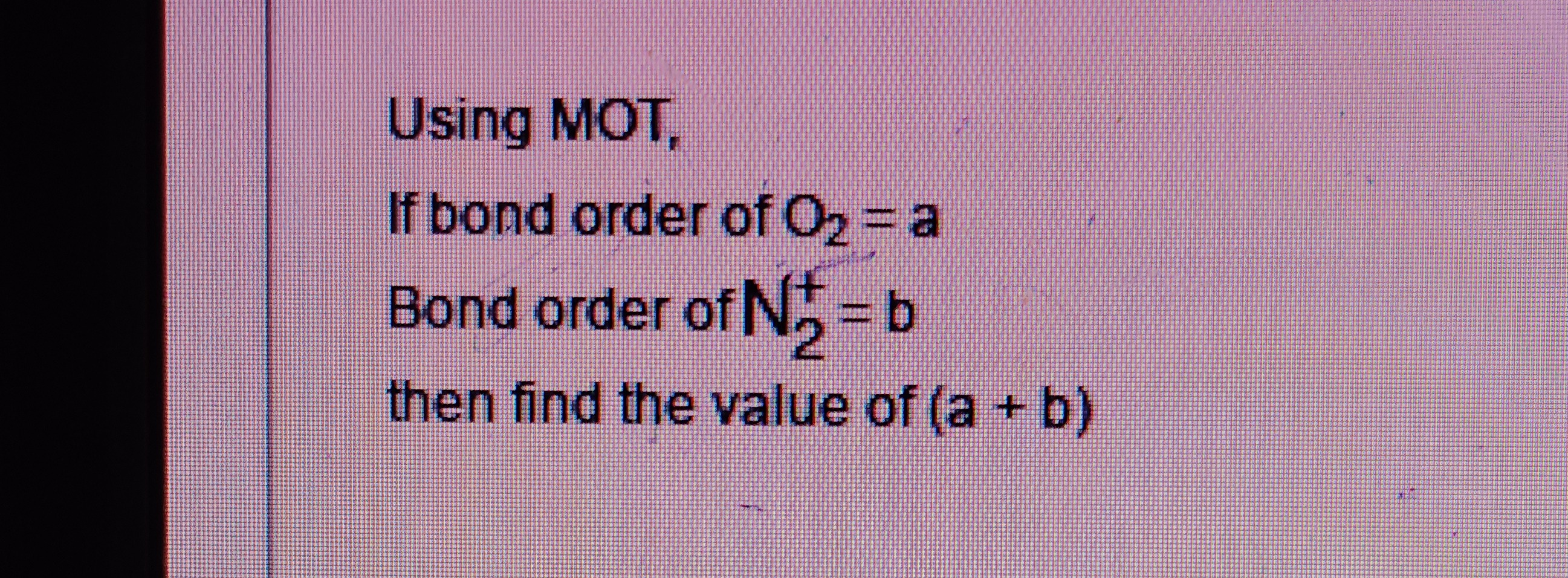Question
Question: Using MOT, If bond order of $O_2$ = a Bond order of $N_2^+$ = b then find the value of (a + b)...
Using MOT, If bond order of O2 = a Bond order of N2+ = b then find the value of (a + b)

4.5
Solution
To find the value of (a + b), we first need to calculate the bond order of O2 (denoted as 'a') and the bond order of N2+ (denoted as 'b') using Molecular Orbital Theory (MOT).
-
Bond order of O2 (a):
The total number of electrons in O2 is 8+8=16.
The molecular orbital configuration for molecules with more than 14 electrons (like O2) is:
σ(1s)2σ∗(1s)2σ(2s)2σ∗(2s)2σ(2pz)2π(2px)2π(2py)2π∗(2px)1π∗(2py)1
Number of bonding electrons (Nb) = 2+2+2+2+2=10
Number of anti-bonding electrons (Na) = 2+2+1+1=6
Bond order of O2 (a) = 21(Nb−Na)=21(10−6)=21(4)=2.
So, a = 2. -
Bond order of N2+ (b):
The total number of electrons in N2 is 7+7=14.
N2+ has lost one electron, so the total number of electrons is 14−1=13.
The molecular orbital configuration for molecules with 14 or fewer electrons (like N2+) has a different order of energy levels for the 2p orbitals compared to molecules with more than 14 electrons. The order is π(2px)=π(2py)<σ(2pz).
The molecular orbital configuration for N2+ (13 electrons) is:
σ(1s)2σ∗(1s)2σ(2s)2σ∗(2s)2π(2px)2π(2py)2σ(2pz)1
Number of bonding electrons (Nb) = 2+2+2+2+1=9
Number of anti-bonding electrons (Na) = 2+2=4
Bond order of N2+ (b) = 21(Nb−Na)=21(9−4)=21(5)=2.5.
So, b = 2.5. -
Calculate (a + b):
a + b = 2 + 2.5 = 4.5.
